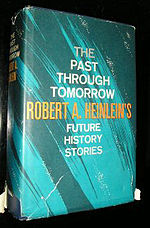Stories
can be narrated, enacted or depicted. Adding extra speakers and actions
transformed narrative into drama. Sequential art story telling, like the Bayeux
Tapestry, the Stations of the Cross, the willow pattern, scrimshaw bracelets and
comic strips, developed from static representational
art. All religions have canonical texts – scriptures - but one, Manichaeanism,
also had canonical pictures, in the “Book of Images."
Comic
strips, like opera, are a composite art form. The former combine pictures with
words as the latter combines drama with music. Comics are no longer only comical
as novels are no longer new. Comic strips can address any age group and can
mediate any genre although they are most closely associated with the one genre
that originated in this medium, superheroes. Superman is the transitional
character between science fiction (sf) and superheroes as Frankenstein is transitional between
Gothic fiction and sf.
Superheroes is a hybrid genre, combining elements of sf, fantasy and
action-adventure. Thus, superheroes, powered either scientifically or
supernaturally, can meet non-super powered masked avengers or costumed
adventurers. Special effects now enable films to present superheroes adequately.
Superhero prose fiction has to emphasize characterization rather than fantastic
feats.
Mr Hyde and the Invisible
Man were pre-comics super-villains. The latter forced a tramp called Thomas
Marvel into the non-super-powered sidekick role. Later, Marvel, as the landlord
of an inn called "The Invisible Man," secretly possesses but cannot
understand the title character's
notebooks containing "...the subtle secret of invisibility and a dozen other
strange secrets..." 1
Ironically, much later, superheroes included Captain
Marvel and Invisible Girl, the latter published by Marvel
Comics. No doubt, Alan
Moore's The League of Extraordinary Gentlemen, already incorporating
Griffin (the
Invisible Man), Cavor, the Time Traveller, Dr Moreau, Wellsian and other
Martians, Hyde, Dupin, Holmes, Captain Nemo, Allan Quatermain, John Carter etc,
would be able to link Wells' Marvel to the later Marvels. Are the "...dozen
other strange secrets..." other super powers? Griffin says that his formula involves four dimensions (as,
in other Wells stories, do the Time Machine, Davidson's eyes and Plattner's
reversal) and that:
"In the books - the books
that Tramp has hidden - there are marvels, miracles!" 2
After Marvel's death, when someone else
can read and interpret the notebooks, a new superhero team, atoning for Griffin's crimes,
might meet in the cellar of "the Invisible Man."
Gladiator (1930) by Philip Wylie was
a possible source for Superman (1938). Like the earliest published
version of Superman, Wylie's Hugo Danner was strong, fast and invulnerable but
could neither fly nor see through walls. Like Danner, Superman intimidated a
corrupt lobbyist. 3, 4 Danner imagines becoming either a
powerful bank robber and murderer or a super-detective dispensing summary
justice. 5 His confidante suggests a super-powered group called "The
New Titans." 6
Both Gladiator and the first
Superman episode refer to weight-lifting ants and high-jumping grasshoppers.
Danner's father says of ants:
"Strength a hundred times our own."
7
Siegel writes:
"The lowly ant can support weights a
hundred times its own." 8
Siegel seems to have read Wylie.
Superman, definitely descended from the Hebrew Judge, Samson, the Greek Hero,
Hercules, and the philosophical concept, the Superman, may also be descended
from the hero of an American novel, Hugo Danner. The progression from Superman,
via Captain Marvel and Mick Anglo's Marvelman to Alan Moore's Marvelman,
re-named Miracleman, is a Samsonian-Herculean apotheosis. Moore's Michael Moran
(Marvel/Miracleman) neither despairs like Danner nor conforms like Superman but
rules like the Messiah, with weapons destroyed, money abolished, the environment
saved, energy
abundant, necessities
free, politicians redundant, super powers shared, Fundamentalists in hiding,
civilization interstellar, physical resurrections and Moran worshiped. Thus,
Moore's graphic but superheroes-transcending work restores Biblical, mythical
themes but in futuristic, technological settings.
James
Blish’s earliest sf, published in the same period as the original Superman
stories, contains the kind of fantastic elements that came to be refined into a
separate genre. Thus, a secret society uses mental powers against extra-solar
invaders in “Citadel of Thought."9 Poul Anderson’s first future
history contains the Un-Men and “The Sensitive Man."10 Julian May and
Larry Niven incorporate superhero motifs into sf novels.11, 12
Thus, the
link between prose sf and comic strip superheroes may be closer than those who read
only prose fiction realize. Also, several works by Alan Moore, including the
pre-comics characters crossover and the superheros climax mentioned here, are
culminating moments of the comics medium.
1. H. G. Wells, The
Invisible Man (London: Penguin Classics, 2005), 150.
2. ibid, p. 89.
3. Philip Wylie, Gladiator (New York: Lancer Books, 1965), pp. 169-170.
4. Jerome Siegel & Joe Schuster, Superman in Action Comics (New York: DC Comics, 1938, 1988), pp. 12-13.
5. Wylie, op. cit., p. 129.
6. ibid, p. 188.
7. Wylie, op., cit., p. 6.
8. Siegel and Schuster, op., cit., p. 1.
9. James Blish, “Citadel of Thought” in Stirring Science Stories (Albing Publications, February 1940), reprinted in Blish, The Best Of James Blish (New York: Ballantine Books, 1979.
10. Poul Anderson, The Psychotechnic League (New York: TOR, 1981), pp. 31-198.
11. Julian May, Diamond Mask (London: Pan Books, 1995).
12. Larry Niven, Protector (London: Futura Publications Ltd, 1974).
2. ibid, p. 89.
3. Philip Wylie, Gladiator (New York: Lancer Books, 1965), pp. 169-170.
4. Jerome Siegel & Joe Schuster, Superman in Action Comics (New York: DC Comics, 1938, 1988), pp. 12-13.
5. Wylie, op. cit., p. 129.
6. ibid, p. 188.
7. Wylie, op., cit., p. 6.
8. Siegel and Schuster, op., cit., p. 1.
9. James Blish, “Citadel of Thought” in Stirring Science Stories (Albing Publications, February 1940), reprinted in Blish, The Best Of James Blish (New York: Ballantine Books, 1979.
10. Poul Anderson, The Psychotechnic League (New York: TOR, 1981), pp. 31-198.
11. Julian May, Diamond Mask (London: Pan Books, 1995).
12. Larry Niven, Protector (London: Futura Publications Ltd, 1974).





















